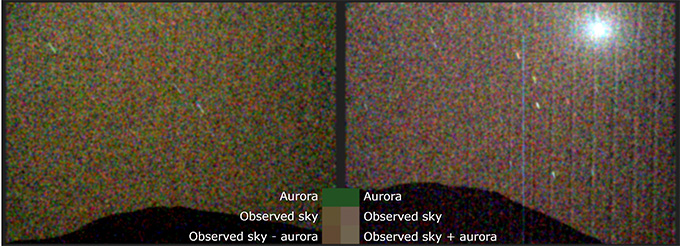On some Martian nights, a subtle, green glow hangs low in the sky, wreathing the horizon in every direction.
A visible Martian aurora has finally been observed for the first time, researchers report May 14 in Science Advances. The observation, made March 18, 2024, by the Perseverance rover, is also the first of an aurora from the surface of a planet that isn’t Earth. Moreover, it suggests future astronauts may witness ethereal Martian auroras with their own eyes. “It would be a dull or dim green glow to astronauts’ eyes,” says Roger Wiens, a planetary scientist at Purdue University in Lafayette, Ind.
Auroras can appear when charged particles from space interact with a planet’s atmosphere. They’ve already been spotted on Mercury, Jupiter and every other non-Earth planet in our solar system, but only from orbit. And in Mars’ sky, scientists had only been able to detect auroral wavelengths of light invisible to the naked eye, using instruments. So it wasn’t clear how Martian auroras would appear to future, landed astronauts.
Compared to many Earthly aurora photos, the new image from Mars is fuzzy. There are a couple reasons for that. First, Perseverance’s cameras perform less well at night, Wiens says. “The instruments aren’t tremendously more sensitive than human eyes,” he says.
And second, Mars doesn’t have a global magnetic field that concentrates auroras near its poles like Earth does. Instead, its crust is magnetized in patches. That means auroras can appear all over the planet, but they’re relatively dim.
The particles that prompted this aurora probably arrived with the shock front of a coronal mass ejection. These are large clouds of plasma and magnetic fields blasted by the sun into space, sometimes toward planets. They can paint auroras in Earth’s skies too. Wien’s team had been alerted to this ejection days in advance, allowing them to prepare Perseverance.
While the rover is located near Mars’ equator, it could be interesting to try observing auroras from Mars’ southern hemisphere, Wiens says. That’s the most magnetized part of the planet, he explains. “Aurora in that area might look particularly strong.”
#Perseverance #takes #picture #visible #Martian #aurora
Image Source : www.sciencenews.org

